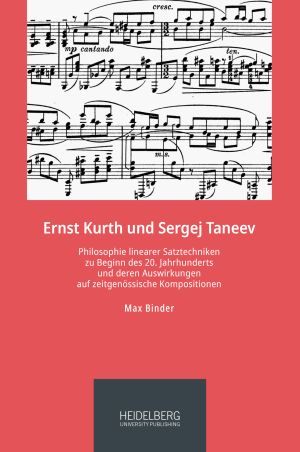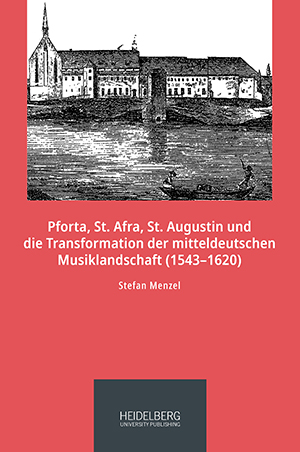Heidelberger Schriften zur Musikwissenschaft
The Heidelberger Schriften zur Musikwissenschaft is a peer-reviewed open-access series in which only outstanding monographs from the entire field of musicology from antiquity to modern times are published.
The book series is co-edited by Christiane Wiesenfeldt and Christoph Flamm and is based at the Department of Musicology at Heidelberg University. It is open to external authors who wish to publish in a series with high quality assurance. An international scientific advisory board consisting of Friedrich Geiger (Munich), Inga Mai Groote (Zurich), Christian Leitmeir (Oxford) and Panja Mücke (Mannheim) supports the editors in ensuring scientific quality.
The series enables quality-assured publication not only for German but also for English-language monographs and makes the Heidelberg Seminar visible as a place of international research.
Heidelberger Schriften zur Musikwissenschaft
Editors
- Christiane Wiesenfeldt, Heidelberg
- Christoph Flamm, Heidelberg
Published so far
»Ernsthafte Genauigkeit und ehrende Strenge«: Musikkritik und -analyse um 1800
This study examines musical analyses in German-language music journals from the 1760s to the 1820s with regard to their journalistic and theoretical context. Like hardly any other format of the time, these texts bundle the many facets of thinking about music: aesthetics, theory and the history of music are related to each other in many reviews of works, linked and illustrated by analysis as a tool of demonstration. Thus, these texts are not only distillations of musical discourses of the time, but also provide information about an important phase in the history of musical analysis and interpretation.
Ernst Kurth und Sergej Taneev: Philosophie linearer Satztechniken zu Beginn des 20. Jahrhunderts und ihre Auswirkungen auf zeitgenössische Kompositionen
The emergence of Linearity at the beginning of the 20th century represents a remarkable but yet rarely dealt with phenomenon in music history. Two main protagonists of the time were Ernst Kurth (Bern) and Sergei Taneev (Moscow), whose counterpoint theories formed the basis for the work of numerous musicians of the time. Although concerning the same subject, both theories show fundamental differences, in music-theoretical as well as in music-aesthetic respect. It turns out that these different philosophies are reflected in numerous works by composers such as Ernst Křenek, Artur Schnabel, Alexander Scriabin and Nikolaj Metner.
Pforta, St. Afra, St. Augustin und die Transformation der mitteldeutschen Musiklandschaft (1543–1620)
The Albertine Prince’s Schools Pforta, St. Afra, and St. Augustin considerably contributed to the consolidation of Lutheran church music. The three schools, their teachers, and their alumni transformed Central Germany into a flourishing musical landscape. This study traces this process in detail, thus filling the musico-historical gap between the Wittenberg Reformation and the Thirty Years’ War and describing one of the most significant musical landscapes of the German-speaking lands.








